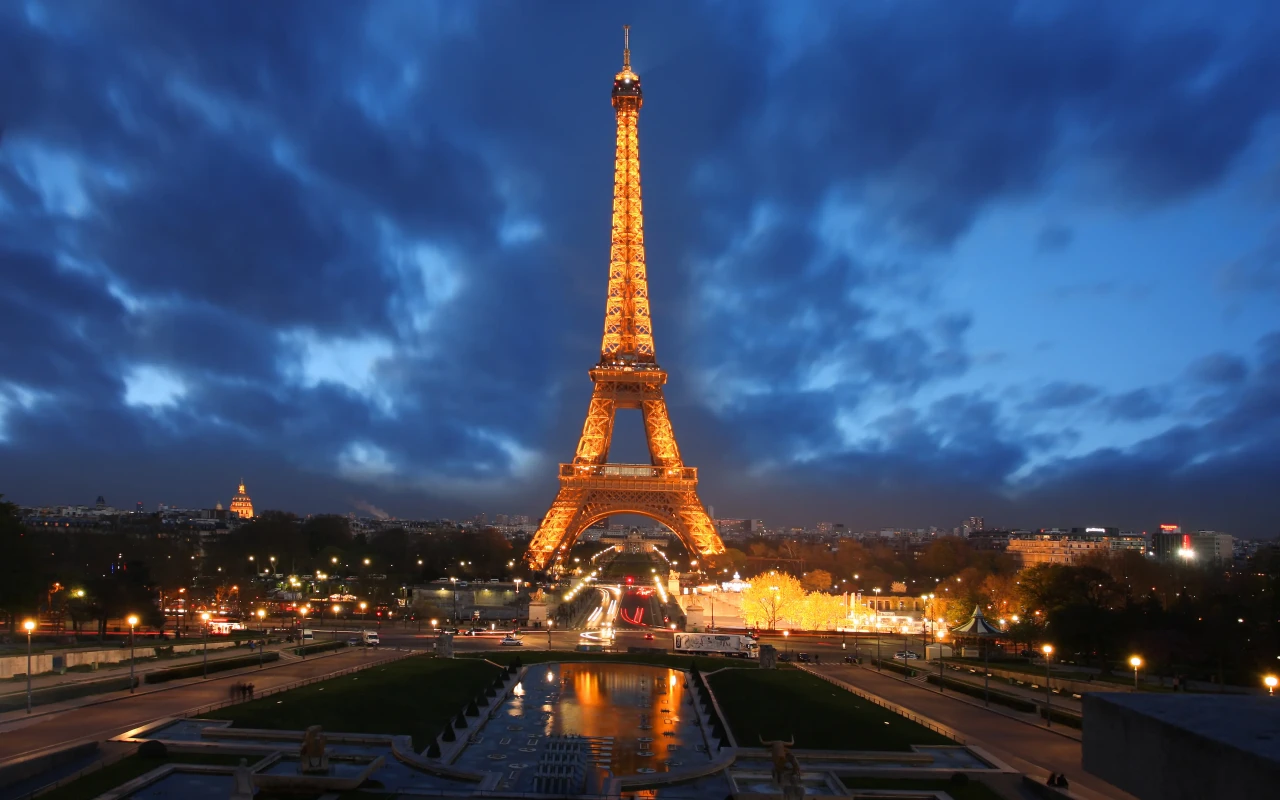Claim to Fame
The Eiffel Tower is the most iconic symbol of Paris and one of the most recognizable landmarks in the world, offering panoramic views from its iron lattice structure.
📌 Navigating Eiffel Tower : Answers to Frequently Asked Questions
- Important Information: It is advisable to book tickets in advance to avoid long lines and ensure entry at your desired time.
- Washrooms: Washrooms are available throughout the Eiffel Tower for visitor convenience.
- Hours of Operation: The Eiffel Tower is generally open from 9:30 AM to 11:45 PM, with hours subject to change based on the season.
- How Long to Visit: A visit to the Eiffel Tower typically lasts between 1 to 2 hours, depending on the level of exploration.
- Admission Fee: Admission fees vary by age and time of year, with discounted rates for children and free entry for children under 4.
- Parking: There is no dedicated parking at the Eiffel Tower; visitors are encouraged to use public transportation.
- Family Friendly: The site is family-friendly, offering activities and educational experiences for children and adults alike.
- Photography: Photography is permitted, with stunning views available from various levels of the tower.
- WIFI: Free Wi-Fi is available at the Eiffel Tower for visitors to use during their stay.
- Picnic Area: There is no designated picnic area on the Eiffel Tower itself, but there are nearby parks where picnicking is allowed.
- Handicap Accessible: The Eiffel Tower is handicap accessible, with elevators and facilities designed for visitors with reduced mobility.
- Pets: Pets are not allowed in the Eiffel Tower, except for service animals.
- Guided Tours: Guided tours are available, providing in-depth information about the tower's history and architecture.
- Restaurant or Cafe: There are dining options, including restaurants and cafes, located within the tower offering French cuisine.
- Gift Shop: A gift shop is located at the Eiffel Tower, offering souvenirs and memorabilia related to the landmark.
Photos of Eiffel Tower
Standing at 330 meters tall, the Eiffel Tower was originally built for the 1889 Exposition Universelle to celebrate the 100th anniversary of the French Revolution. Today, it is the most visited paid monument globally and an enduring emblem of French engineering and elegance.
What to Expect
The tower has three public levels: the first with transparent floors and exhibitions, the second offering restaurants and sweeping city views, and the summit providing a breathtaking 360-degree panorama. Whether you take the glass elevator or climb the stairs to the second level, each platform offers unique perspectives of Paris, from the River Seine to the distant Sacré-Cœur.
Evening visits are especially magical, as the tower sparkles with lights every hour on the hour after dusk. There’s also a champagne bar at the summit for a celebratory toast over the City of Light.
Background and Cultural Context
Designed by Gustave Eiffel, the tower was initially met with criticism from Parisians who found it unsightly. Over time, it became a beloved part of the city’s skyline. It played roles in wartime communications, inspired generations of artists, and continues to symbolize romance, innovation, and French pride.
Best Time to Visit
Early morning or late evening visits tend to have the shortest lines. Weekdays are quieter than weekends, and advance booking online is highly recommended. Visiting at sunset lets you experience the city both in daylight and as it transitions to nighttime brilliance.
How to Get There
The Eiffel Tower is located in the 7th arrondissement at the Champ de Mars. The closest Metro stations are Bir-Hakeim (Line 6) and Trocadéro (Line 9), the latter offering the most iconic view across the Seine.
Photo Opportunities
- Classic skyline shots from the Trocadéro platform
- Views from beneath the tower looking up into the ironwork
- Nighttime sparkles with a long-exposure camera setting
- Summit selfies with Paris spread below you
Travel Tips
- Buy tickets online to skip the long entry queues.
- Bring a jacket — it can be windy at the top even in summer.
- Restaurants on the tower (like Le Jules Verne) require reservations and smart attire.
- Watch your belongings — pickpocketing is common in crowded areas around the base.
FAQs
Is it worth going to the summit?
Yes — while the second level has great views, the summit offers a unique perspective and an unforgettable experience.
Can I climb the stairs instead of using the elevator?
Yes — stairs are available to the second level (674 steps), which is a rewarding challenge with beautiful views along the way.
Is the tower accessible?
Yes — elevators provide access to the first and second levels, though the summit may not be suitable for all visitors with mobility issues.
Final Thoughts
The Eiffel Tower is more than just a Parisian icon — it’s a once-in-a-lifetime experience that combines architecture, history, and the best views in the city. Whether you're admiring it from afar or standing at its summit, it will leave a lasting impression on your visit to Paris.
